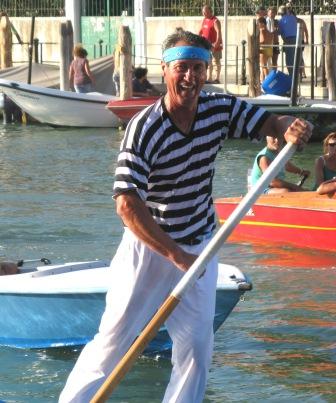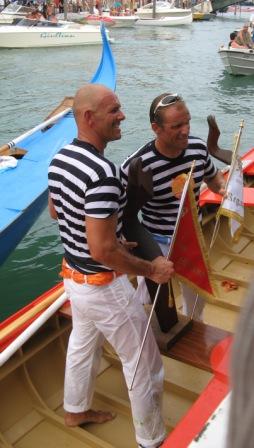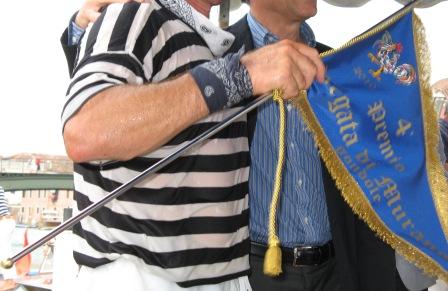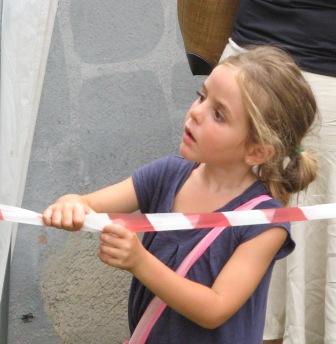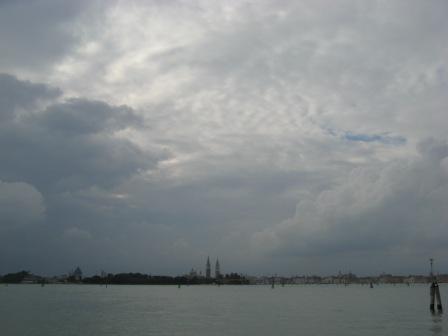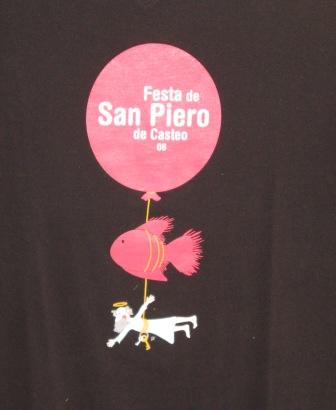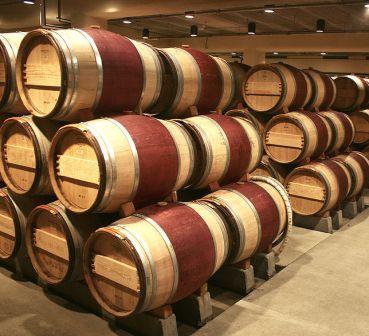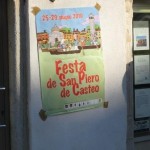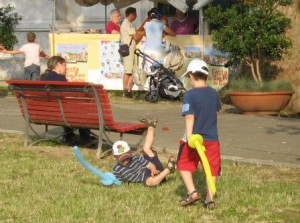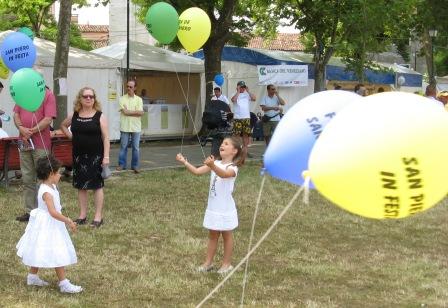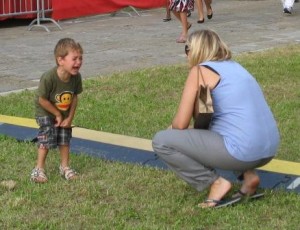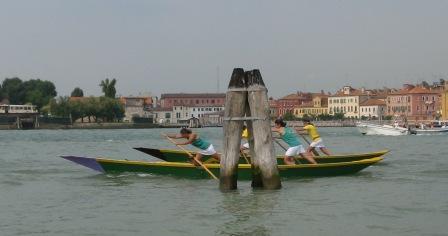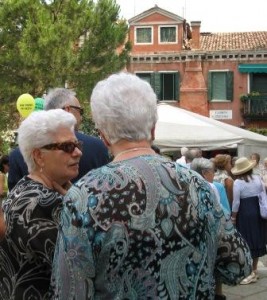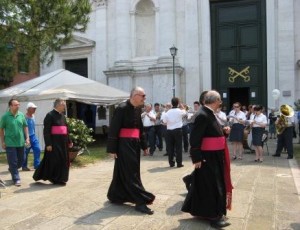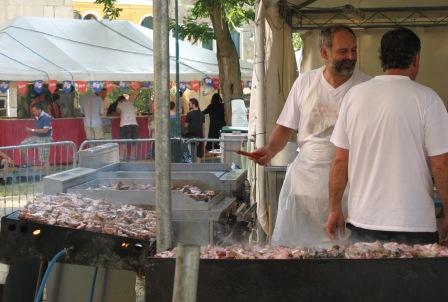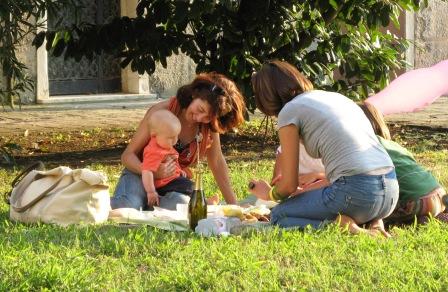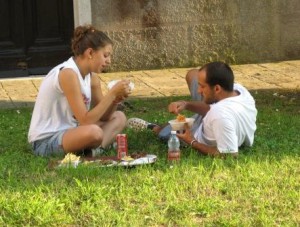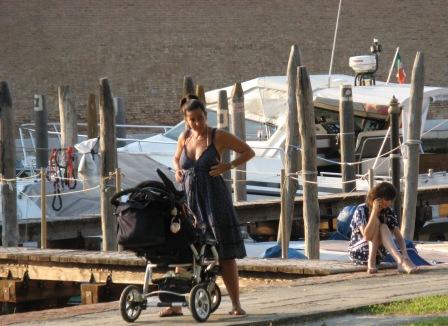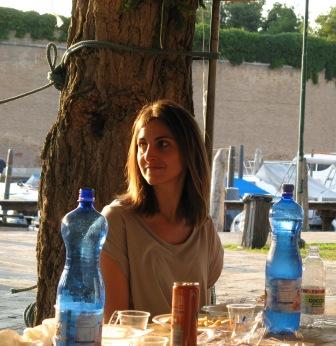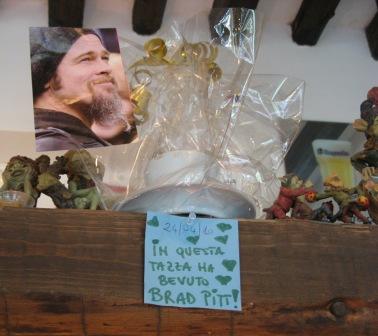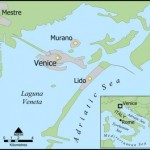
If you’ve ever been to Murano, one of the world’s great glass-making centers, you will know that it’s impossible to race through it. You will be exhausted, but not because you’ve been going so fast; au contraire, you will have been plodding along at the pace of those debilitated galley slaves in Ben-Hur, going in and out of so many shops you’ll think they’ve been breeding in dark corners when you’re not looking. The five islands that make up Murano, of which you will probably only visit two, cover barely one square mile, and the Yellow Pages list 61 shops. I think there must be more.
Anyway, you will not have been racing. Unless it’s the first Sunday in July, in which you can come to Murano to watch other people race, and believe me, they’re going to be more tired in less time than you and your whole family after an entire day.

The regata of Murano is really three regatas, each involving solo rowers, which calls not only for stamina but for skill. The races are for young men on pupparinos, women on pupparinos, and grown men on gondolas. It’s always hot, and there is always wind, and sometimes, like a few years ago, there can be sudden thunderstorms with pouring rain. But the race must go on.

The city of Venice organizes nine regatas a year, plus the Regata Storica. Each race is designed for a particular type of boat and number of rowers, and each is held in a different part of the lagoon, which means that the conditions and course present their own particular quirks. These changing venues also means that some are easier to watch from the shore than others, and the one at Murano is especially exciting not only because you can see both the start and the finish, but because there are good vantage-points along the fondamentas, and even a big cast-iron bridge from which to get a spectacular view of the finish.
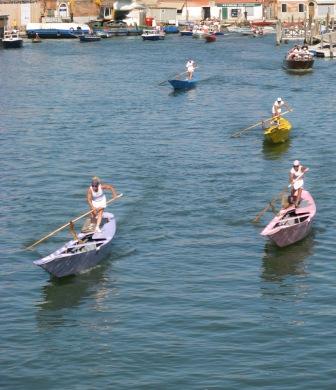
Regatas (a Venetian word, by the way), have been an important feature of Venetian festivities since the Venetians crawled out of the primordial ooze; sometimes they were part of a religious celebration, or part of the myriad spectacles staged for the amusement of visiting potentates, but they were one-time events.
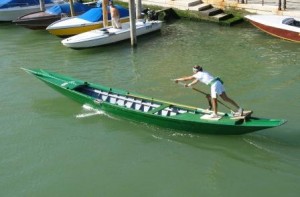
But in 1869, the regata at Murano was established as a regular annual event and not for any prince or pope but to entertain — yes — tourists. And whether or not tourists can look up for a few minutes from the heaps of glass necklaces and picture frames and flower vases, this race is arguably the most important occasion for a Venetian racer to show what he, or she, has really got. I can tell you that the man who wins the gondola race is universally regarded as having won something akin to Wimbledon, or maybe the Ironman Triathlon, or the Tour de France. Maybe all of them.
Here’s what it takes to win: Strength, stamina, skill, luck, and extreme and ruthless cunning. It also helps if you’re tall. It’s a physics thing; short rowers have a hard time keeping up with taller ones, though sometimes a short person has pulled it off, especially if he or she (I’m thinking of a she) is lavishly gifted with the aforementioned luck and cunning. Or just cunning.
My two most vivid memories of this race are from one of the earliest ones I ever attended, and the one from last Sunday. Both, oddly, involve a certain racer named Roberto Busetto.
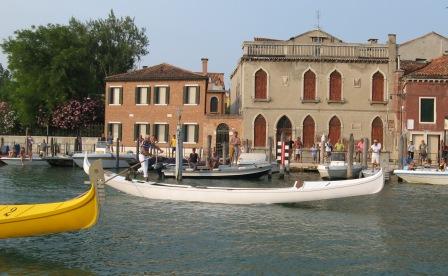
Mr. Busetto is strong — he looks like Mr. Clean, and he has biceps that make you think of whole prosciuttos. He is also experienced, and very determined (I’m not sure that he’s made it up to “ruthless”), but if anything ever upsets him during the race — even if it may not have prevented him from finishing really well — he can be counted on to show up for his prize yelling about it. In fact, there will always be something that’s wrong, and he goes all Raging Bull at the judges, at some fellow racer, at some onlooker, at anyone or anything that might have created even the tinest problem for him. Or who looks like they don’t care. It’s never easy to understand, in the midst of his tirade, what actually went wrong. But you know he’s mad.
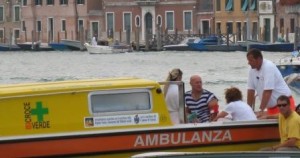
The first time I saw Busetto at full throttle, he had barely crossed the finish line when he started ranting. It had something to do with what he claimed was some sneaky, illegal thing that another racer, Franco Dei Rossi, had inflicted on him, thereby preventing him from finishing better.
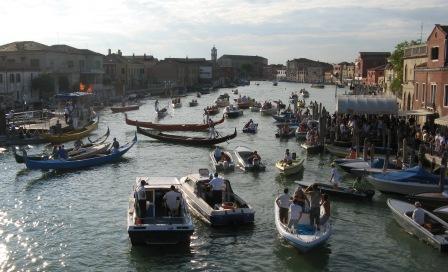
But it wasn’t his tantrum that stunned me, though I didn’t know at that point that tantrums are his normal means of expression, the way some people can’t help starting every sentence with “Well” or “You know.” It was the fact that under this deluge of outrage, Dei Rossi was sobbing as he mounted the judges’ stand to be awarded his prize. A grown man, one of the greatest (in my view) racers of his generation, son of one of the greatest racers in history, was standing there weeping uncontrollably. It was so astonishing and distressing that I know I didn’t imagine it, and I’m not exaggerating, either. I’m glad I didn’t have a camera with me, I wouldn’t be able to bear looking at the pictures. It really left a mark on me.
So we come to last Sunday. It’s Busetto again. He has been racing for at least 20 years, maybe more, but he had only a very brief peak, and that was quite some while ago. In fact, I’d have to stop and do some research to determine when was the last time he won a pennant. I think the Beatles may still have been together. (Just kidding; it was in 2000.)
But this year, he finished third. Which means he won the green pennant, which means that after a ten-year drought he had managed to pull himself back into the ranks of the demi-gods. Pennants are awarded to the first four finishers, and they really matter to the racers, almost as much as the cash prize.
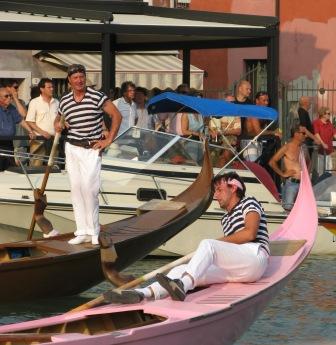
Finishing third is pretty great, but about two seconds after crossing the finish line, he collapsed. First he sort of let himself fall down backwards on the stern of the boat, which isn’t so strange except that it’s usually the younger men who want to show how completely wrung out they are. It’s like when they throw their oar in the water (rage, joy, some other intense emotion — looks very dramatic, till you realize how dumb it is).
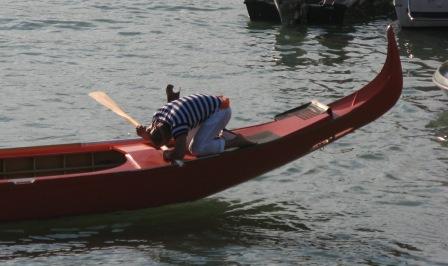
But then my friend Anzhelika said, “He’s too white.” Then I noticed that his boat had drifted slaunchwise across the canal, blocking the arrival of the last gondolas. Then there was some commotion, then the sound of the water ambulance arriving at full speed.
Much pouring of cool water on his head, much checking of his blood pressure. He tore himself away long enough to come pick up his pennant, annoyed (of course), though not yelling, because everybody was fussing over him. He likes attention, but nobody with arms like prosciuttos wants it to be because he fell apart.
But some things in life are bigger than prosciuttos, and rowing under the searing sun for 40 minutes at full blast if you’re not in astronaut-type physical condition is asking for it. “It” being an ambulance and a blood-pressure cuff, and lots of people suddenly looking at you like you’re some kind of invalid.
You know it’s serious when Roberto Busetto isn’t yelling.
